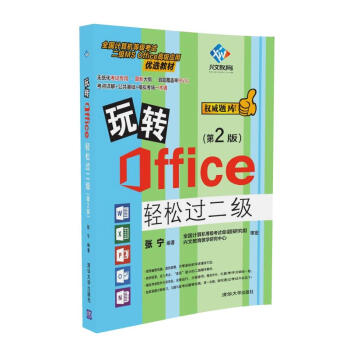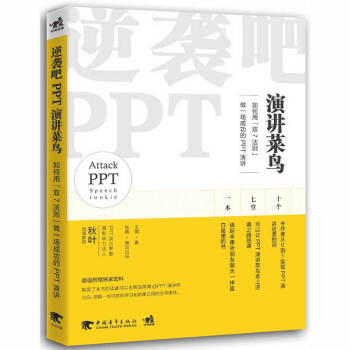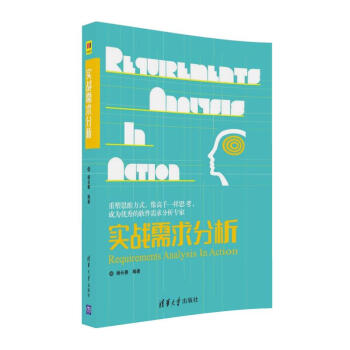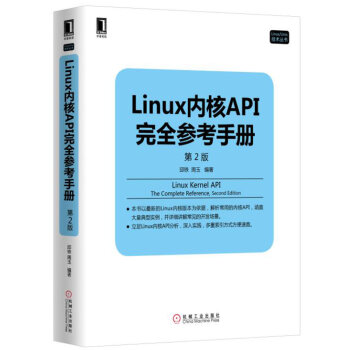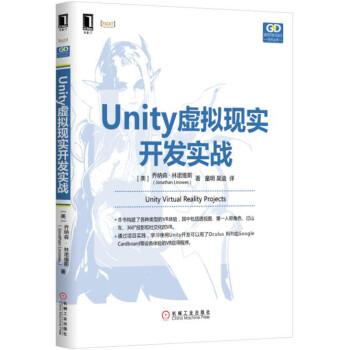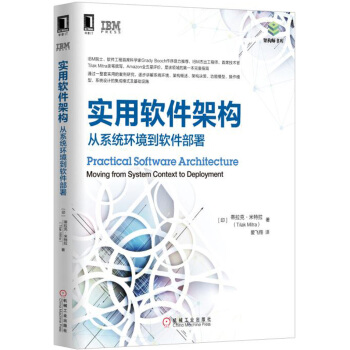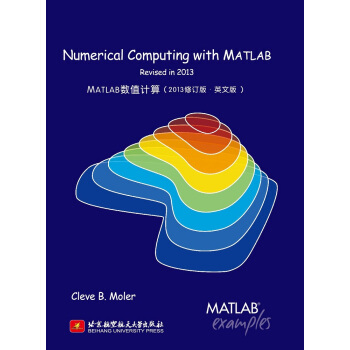

具体描述
编辑推荐
Numerical Computing with MATLAB revised in 2013(MATLAB数值计算-2013修订版 英文版)
MATLAB之父Cleve B. Moler的经典之作,经Cleve本人正式授权,中国首印。
海报:
内容简介
《MATLAB数值计算·2013修订版(英文版)》已得到MATLAB、数值分析和科学计算之父Cleve Moler 本人正式授权。该书不以深奥的数值分析理论为内容,而以易于理解的数学思维和便于掌握的数学计算编程技术为教学素材。该书摒弃以往数值分析教材中常见的程式性定理、定理证明、收敛性理论和冗长公式推演。该书数值算法原理的表述,言简意骇、层次丰富、见解独到、精辟;数学计算软件的教学内容易学易懂,构思巧妙而循循善诱。全书正文共11 章,包括:MATLAB 入门、线性方程组、插值、零点和根、小二乘、定积分、常微分方程、随机数、傅立叶分析、特征值和奇异值、偏微分方程。每章后都配置了大量习题。与本书正文及习题匹配的70 多个M 文件都由Cleve Moler 本人编写,并被其本人赞为引以自傲的软件作品。该书所有代码都适配于MATLAB R2014a。
该书是Cleve Moler 专为高校研究生、本科生编写的数值计算、MATLAB 教材。该书也是所有MATLAB 用户理解MATLAB 算法原理的好指南,也是广大科技人员自学、精读或随时查阅的可信赖的参考书。
作者简介
Cleve B.Moler,是MathWorks公司的董事长和首席科学家。Moler先后在密歇根大学、斯坦福大学、新墨西哥大学担任数学和计算机科学教授达20余年。1989年全职加入MathWokrs公司之前,他先后在Intel Hypercube和Ardent Computer这计算机硬件生产公司工作了五年。Cleve先后就读于加州理工和斯坦福并获博士学位。作为MATLAB创始人,他同时也是LINPACK和EISPACK科学子程序库的作者之一。他与别人合作出版了三本关于数值方法的书,同时也独立编写了Numerical Computing with MATLAB 和 Experiments with MATLAB。
Cleve长期服务于美国工业与应用数学学会,并于2007-2009任主席。Cleve于1997年当选美国国家工程院院士,并获多项荣誉,包括瑞典林学平大学荣誉学位,加拿大滑铁卢大学荣誉数学博士学位,丹麦科技大学荣誉博士等。Cleve还获得IEEE计算机学会的2012年计算机先驱奖。
内页插图
目录
Preface1Introduction to MATLAB
1.1 The Golden Ratio
1.2 Fibonacci Numbers
1.3 Fractal Fern
1.4 Magic Squares
1.5 Cryptography
1.6 The 3n+1 Sequence
1.7 Floating-Point Arithmetic
1.8 Further Reading
Exercises
2 Linear Equations
2.1 Solving Linear Systems
2.2 The MATLAB Backslash Operator
2.3 A 3-by-3 Example
2.4 Permutation and Triangular Matrices
2.5 LU Factorization
2.6 Why Is Pivoting Necessary?
2.7 lutx, bslashtx, lugui
2.8 Effect of Roundoff Errors
2.9 Norms and Condition Numbers
2.10 Sparse Matrices and Band Matrices
2.11 PageRank and Markov Chains
2.12 Further Reading
Exercises
3 Interpolation
3.1 The Interpolating Polynomial
3.2 Piecewise Linear Interpolation
3.3 Piecewise Cubic Hermite Interpolation
3.4 Shape-Preserving Piecewise Cubic
3.5 Cubic Spline
3.6 pchiptx, splinetx
3.7 interpgui
Exercises
4 Zeros and Roots
4.1 Bisection
4.2 Newton's Method
4.3 A Perverse Example
4.4 Secant Method
4.5 Inverse Quadratic Interpolation
4.6 Zeroin
4.7 fzerotx
4.8 fzerogui
4.9 Value Finding and Reverse Interpolation
4.10 Optimization and fmintx
Exercises
5 Least Squares
5.1 Models and Curve Fitting
5.2 Norms
5.3 censusgui
5.4 Householder Reflections
5.5 The QR Factorization
5.6 Pseudoinverse
5.7 Rank De ciency
5.8 Separable Least Squares
5.9 Further Reading
Exercises
6 Quadrature
6.1 Adaptive Quadrature
6.2 Basic Quadrature Rules
6.3 quadtx, quadgui
6.4 Specifying Integrands
6.5 Performance
6.6 Integrating Discrete Data
6.7 Further Reading
Exercises
7 Ordinary Differential Equations 193
7.1 Integrating Differential Equations
7.2 Systems of Equations
7.3 Linearized Differential Equations
7.4 Single-Step Methods
7.5 The BS23 Algorithm
7.6 ode23tx
7.7 Examples
7.8 Lorenz Attractor
7.9 Stiffness
7.10 Events
7.11 Multistep Methods
7.12 The MATLAB ODE Solvers
7.13 Errors
7.14 Performance
7.15 Further Reading
Exercises
8 Fourier Analysis
8.1 Touch-Tone Dialing
8.2 Finite Fourier Transform
8.3 fftgui
8.4 Sunspots
8.5 Periodic Time Series
8.6 Fast Finite Fourier Transform
8.7 ffttx
8.8 fftmatrix
8.9 Other Fourier Transforms and Series
8.10 Further Reading
Exercises
前言/序言
PrefaceNumerical Computing with MATLAB is a textbook for an introductory coursein numerical methods, Matlab, and technical computing. The emphasis is on in-formed use of mathematical software. We want you learn enough about the mathe-matical functions in Matlab that you will be able to use them correctly, appreciatetheir limitations, and modify them when necessary to suit your own needs. Thetopics include
introduction to Matlab,
linear equations,
interpolation,
zero and roots,
least squares,
quadrature,
ordinary differential equations,
random numbers,
Fourier analysis,
eigenvalues and singular values,
partial differential equations.
George Forsythe initiated a software-based numerical methods course at Stan-ford University in the late 1960s. The textbooks by Forsythe, Malcolm, and Moler[20] and Kahaner, Moler, and Nash [34] that evolved from the Stanford course werebased upon libraries of Fortran subroutines.
This textbook is based upon Matlab. NCM, a collection of over 70 M-files, forms an essential part of the book. Many of the over 200 exercises involvemodifying and extending the programs in NCM. The book also makes extensiveuse of computer graphics, including interactive graphical expositions of numericalalgorithms.
The prerequisites for the course, and the book, include
calculus,
some familiarity with ordinary differential equations,
some familiarity with matrices,
some computer programming experience.
If you've never used Matlab before, the rst chapter will help you get started. Ifyou're already familiar with Matlab, you can glance over most of the rst chapterquickly. Everyone should read the section in the rst chapter about oating-point
arithmetic.
There is probably too much material here for a one-quarter or one-semestercourse. Plan to cover the rst several chapters and then choose the portions of thelast four chapters that interest you.
Make sure that the NCM collection is installed on your network or your per-sonal computer as you read the book. The software is available from a Web sitedevoted to the book [47]:
http://www.mathworks.cn/moler
There are three types of NCM files:
gui files: interactive graphical demonstrations;
tx files: textbook implementations of built-in Matlab functions;
others: miscellaneous files, primarily associated with exercises.When you have NCM available,
ncmgui
produces the figure shown on the next page. Each thumbnail plot is actually a pushbutton that launches the corresponding gui.
This book would not have been possible without the people at The MathWorksand at SIAM. Both groups are professional, creative, and delightful to work with.They have been especially supportive of this book project. Out of the many friendsand colleagues who have made speci c contributions, I want to mention five inparticular. Kathryn Ann Moler has used early drafts of the book several times incourses at Stanford and has been my best critic. Tim Davis and Charlie Van Loanwrote especially helpful reviews. Lisl Urban did an immaculate editing job. My wifePatsy has lived with my work habits and my laptop and loves me anyway. Thanks,everyone.
A revised reprint in 2008 included a change in the section on Google PageRankthat improves the handling of web pages with no out links, a short new section inthe Random Numbers chapter, removal of material on inline and feval, andcorrection of a few dozen minor typographical errors.
A significant update in September 2013 incorporates over 60 changes. Manyof them have been recommended by Professor Zhiyong Zhang of Nanjing Univer-sity of Posts and Telecommunications in China (NJUPT), who prepared a Chinesetranslation for BUAA press. The census example in section 5.3 includes the 2010census. Output from format long shows 16 signi cant digits. Symbolic Toolboxusage re
ects the MuPad connection. Many thanks to Prof. Zhang.
Cleve Moler
Sept. 16, 2013
用户评价
哇,终于拿到这本《MATLAB数值计算·2013修订版(英文版)》了!刚翻了几页就被它严谨又不失趣味的风格吸引住了。作为一名正在攻读数值分析专业的学生,我一直在寻找一本能够系统性地讲解各种数值算法,并且能够结合MATLAB实际应用的教材。这本书的排版非常清晰,每一章的开头都会对即将介绍的算法有一个简要的概述,然后循序渐进地深入讲解其数学原理、推导过程,以及在MATLAB中的具体实现。我特别喜欢它在讲解过程中插入的那些“思考题”和“练习题”,这些题目不仅仅是检验对知识点掌握程度的工具,更是引导我主动去探索和理解算法背后逻辑的绝佳途径。比如,在讲到插值法那一章时,作者并没有直接给出各种插值函数的MATLAB代码,而是先详细阐述了多项式插值、样条插值等方法的优劣势,然后引导读者思考如何根据不同的数据特性选择最合适的插值方法。这种循序渐进的学习方式,让我感觉自己不是在被动接受知识,而是在主动参与到知识的构建过程中。而且,英文版的语言表达非常地道、专业,对于我提升英语阅读能力和专业术语的掌握也有极大的帮助。我迫不及待地想开始我的“数值计算之旅”了!
评分我是一名对编程有着浓厚兴趣的大二学生,虽然还没有深入学习过专门的数值分析课程,但对利用计算机解决数学问题充满了好奇。《MATLAB数值计算·2013修订版(英文版)》这本书,给我打开了一个全新的世界!最吸引我的地方是它并不要求读者具备深厚的数学背景,而是用一种非常易于理解的方式,循序渐进地介绍了各种数值算法。书中大量的图示和直观的解释,让原本抽象的数学概念变得生动起来。我特别喜欢书中关于“误差分析”的部分,它让我明白了在计算机上进行数值计算时,误差是不可避免的,而如何控制和减小误差是至关重要的。作者通过具体的例子,生动地展示了不同算法在数值稳定性方面的差异,这让我对数值计算的严谨性有了更深的认识。此外,书中对MATLAB编程的讲解也十分细致,即使是初学者也能很快上手。我尝试着跟着书中的例子写了一些简单的MATLAB程序,比如求解一元方程的根,计算定积分等,从中获得了巨大的成就感。我相信,通过学习这本书,我不仅能够掌握数值计算的基本方法,还能大大提升我的MATLAB编程能力。
评分作为一名在科研一线摸爬滚打多年的工程师,我对数值计算的实际应用有着非常迫切的需求。过去,我常常为了解决一个工程问题,需要在各种零散的资料和代码库中东拼西凑,效率低下,而且很容易陷入“知其然不知其所以然”的困境。而这本《MATLAB数值计算·2013修订版(英文版)》的出现,简直就是雪中送炭!这本书最大的亮点在于它将理论与实践完美地结合在了一起。作者并没有停留在抽象的数学概念上,而是深入浅出地讲解了如何利用MATLAB强大的数值计算能力来解决实际问题。书中提供了大量的代码示例,这些代码不仅可以直接运行,更重要的是,它们都经过了精心的设计和注释,让读者能够清晰地理解每一行代码的功能和作用。我尤其欣赏书中对线性方程组求解、特征值问题、积分和微分方程求解等经典数值问题在MATLAB中的应用介绍。很多时候,一个复杂的工程模拟,背后往往涉及到这些基础的数值计算。这本书的讲解让我对这些问题的MATLAB实现有了更深刻的理解,并且能够根据实际需求进行修改和优化。我感觉,这本书就像一位经验丰富的导师,能够指导我更高效、更准确地运用数值计算解决我的工程难题。
评分作为一名对数据可视化和科学计算有较高要求的用户,我一直在寻找一本能够将MATLAB的数值计算能力与可视化技术相结合的优质教材。《MATLAB数值计算·2013修订版(英文版)》这本书在这方面做得非常出色!书中不仅仅讲解了数值算法本身,更重要的是,它教会了我如何利用MATLAB强大的绘图功能来直观地展示计算结果,以及如何通过可视化手段来理解算法的性能和特性。例如,在讲解插值法时,书中会绘制出原始数据点、插值函数曲线以及误差分布图,这使得读者能够一目了然地看出不同插值方法的优劣。在讲解数值积分时,书中会通过面积图来展示积分的几何意义。这种可视化与数值计算的紧密结合,极大地增强了学习的趣味性和直观性。我发现,通过书中的例子,我不仅学会了如何进行各种数值计算,更能有效地将这些计算结果以清晰、美观的方式呈现出来,这对于我的报告和论文撰写非常有帮助。这本书让我在享受计算乐趣的同时,也能更好地理解和传达科学的结论。
评分这本书的整体风格非常严谨,注重数学理论的深度和严密性,这对于我这样追求学术深度和理论基础的学生来说,无疑是一份宝贵的财富。作者在讲解每一个数值方法时,都会追溯其数学原理,并给出详细的推导过程,毫不回避其中的复杂性。我非常欣赏书中对算法的分析,不仅仅局限于其实现,更深入探讨了算法的收敛性、稳定性和计算复杂度。这些深入的理论分析,能够帮助我理解为什么某些算法在特定情况下表现更好,以及如何根据问题的特性选择最优的算法。书中引用了大量的经典文献和研究成果,这使得这本书具有很高的学术价值,也为我进一步的学术研究提供了方向。虽然这本书是英文版,但其逻辑清晰,术语准确,对于我这个英语阅读能力尚可的学生来说,阅读起来并不存在太大的障碍。我尤其喜欢书中关于“快速傅里叶变换”(FFT)和“非线性优化”等章节的讲解,它们深入浅出,理论与实践兼备,对我的专业学习起到了关键性的指导作用。
评分Cleve B.Moler的又一本著作,很不错
评分专业 专业 因为是作者写的 呵呵
评分中华书局的书还是值得信赖的,印刷不错,还是精包装。
评分英文版是最能解释基本原理的书籍,配得上通俗易懂
评分。。。
评分可以学英语呢,美美哒
评分可以学英语呢,美美哒
评分为了买这本书,费了很大的劲,终于买到了。
评分还没有看,应该不错的,后续有心得再来评价
相关图书
本站所有内容均为互联网搜索引擎提供的公开搜索信息,本站不存储任何数据与内容,任何内容与数据均与本站无关,如有需要请联系相关搜索引擎包括但不限于百度,google,bing,sogou 等
© 2025 book.tinynews.org All Rights Reserved. 静思书屋 版权所有


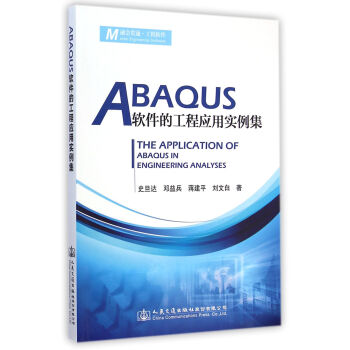
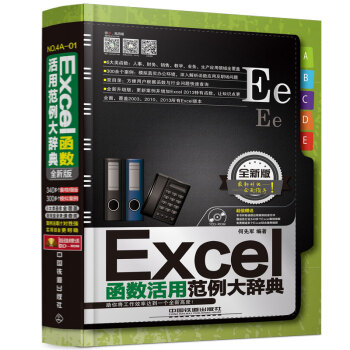


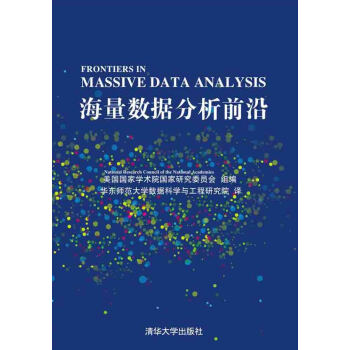
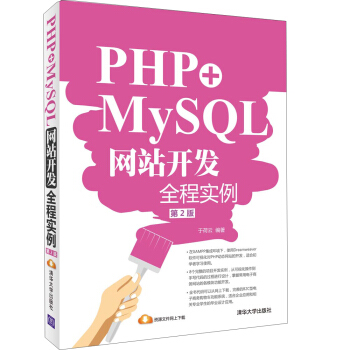
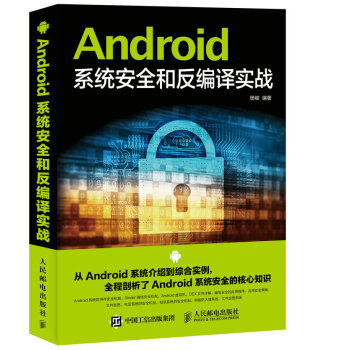
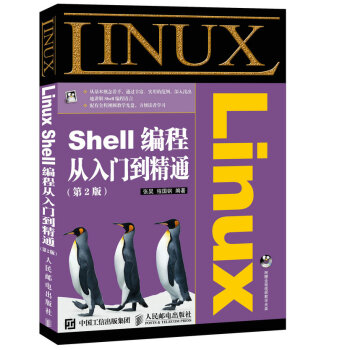

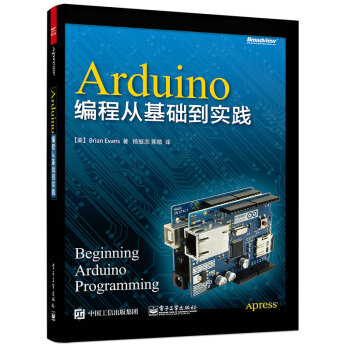
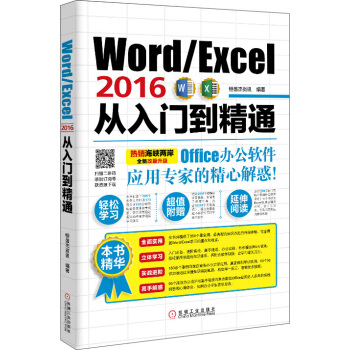

![爱上Python 一日精通Python编程 [Learn Python in One Day and Learn it Well] pdf epub mobi 电子书 下载](https://pic.tinynews.org/11949360/574b8ea2Nf6285fe9.jpg)
